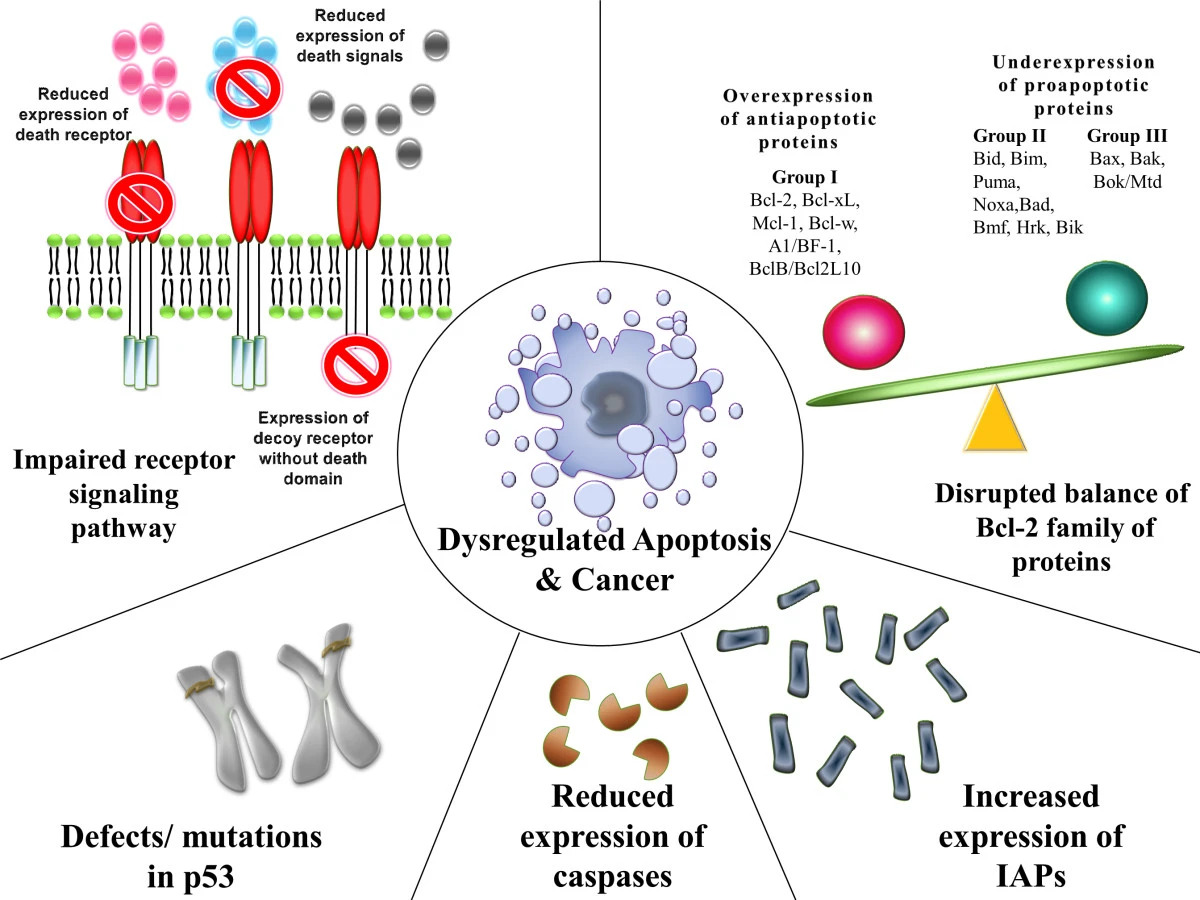Playlist
Show Playlist
Hide Playlist
P53 in DNA Damage Responses: Repair vs. Apoptosis
-
Slides CP Neoplasia Cell Cycle.pdf
-
Reference List Pathology.pdf
-
Download Lecture Overview
00:00 Let's get back to the guardian of the genome, p53. So the guardian of the genome, p53, so it is sensing DNA damage. Well, actually other proteins are sensing DNA damage and then causing the transcription and translation, the increased expression of p53 which will in turn drive cell cycle block. All cells we'll see is very important for making sure that we fix the DNA damage. So that's what we're talking about here. So, a normal cell has low levels of p53 unless it's going through cell cycle, but it's normal, you know it's there. 00:42 Okay, now if we have DNA damage, a variety of proteins that sense that DNA damage and how they actually sense it is kind of interesting and not well understood. But the RAD family ATM, all of those are different proteins that can say "You know what, this DNA, the blueprint is busted. We need to hold the horses here for a bit until we fix any DNA damage. So, once we sense that there's DNA damage through these proteins, we get increased expression and activation of p53. We then get transcriptional upregulation of a variety of target genes. So p53 does its beat by binding to DNA and transcribing particular things that are going to be important for DNA repair, stopping cell cycle, and making sure that everything is perfect again. So, some of the things that are elaborated, a p21, which will end up being a CDK blocker. That will put us in G1 arrest, we won't be able to progress without fixing all that DNA. We upregulate DNA repair genes such as Gadd45. That will allow us to hopefully get the appropriate repair, when it's successful repair and then the breakdown of that p21 by ubiquitination and proteasome degradation, then we are often running when we go through our cell cycle and we have successful repair and we have return of normal cell division. That's a good outcome. However, if we're not able to repair adequately, we really don't want that cell to go on anymore, you know this is a loss cause. 02:33 So what do we do now? Well in fact, p53 is also upregulating the expression of pro-apoptotic genes, genes that will cause the cell to kill itself. So it says "If we weren't successful, we try very hard, we could not fix the DNA damage." In that setting, now we're going to have a cell commit suicide to undergo apoptosis. And therefore, we've protected the entire host. It's better for that cell to die than to become a malignant cell with more mutations. And basically, all of these; p53, RB, all these transcription factors are all very important components and just that G1 to S transition, but there is a similar set of proteins that are also going to be important in the G2M checkpoint as well. And p53 plays another role there, RB plays another role there. But all of these is important. And with that, we've kind of gone through normal cell cycle and kind of normal regulatory pathways and I encourage you to watch this again, if you can stand my voice, and kind of think through the different pathways. P53 and RB, you need to understand. E2F you need to understand. Cyclin and CDK you need to kind of understand. The absolute specifics will probably never show up on the boards, but understanding those pathways will be very important for the treatment of your patients with malignancy. And with that, we ended this portion.
About the Lecture
The lecture P53 in DNA Damage Responses: Repair vs. Apoptosis by Richard Mitchell, MD, PhD is from the course Neoplasia.
Included Quiz Questions
What is the role of the BAX protein?
- Apoptosis
- Cell division
- DNA repair
- G1 arrest
- G2 arrest
What is the function of the GADD45 protein?
- DNA repair
- G1 arrest
- G2 arrest
- Apoptosis
- Normal cell division
Customer reviews
5,0 of 5 stars
| 5 Stars |
|
5 |
| 4 Stars |
|
0 |
| 3 Stars |
|
0 |
| 2 Stars |
|
0 |
| 1 Star |
|
0 |




